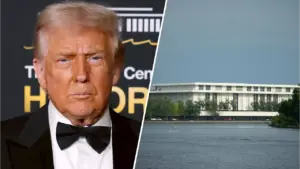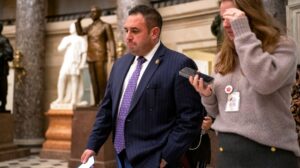
President Donald Trump has intensified the ongoing debate over the government shutdown, now entering its 31st day, by calling for the Senate to eliminate the filibuster. This proposal was promptly dismissed by top Republican leaders who have historically opposed such a change. Trump’s push comes as the Senate remains divided, with a current composition of 53 Republicans to 47 Democrats, allowing the latter to block efforts aimed at reopening the government while they demand an extension of healthcare subsidies.
Trump’s late-night social media announcement on January 17, 2019, bluntly stated, “THE CHOICE IS CLEAR — INITIATE THE ‘NUCLEAR OPTION,’ GET RID OF THE FILIBUSTER.” His assertion has the potential to escalate tensions within the Senate, possibly prompting a compromise or exacerbating the stalemate.
Republican Leaders Respond
In a rare show of public dissent, senior Republican leaders quickly rejected Trump’s demand. Their response highlights the ongoing friction between the president and party leadership at a time when unity is crucial. Historically, both parties have been reluctant to abolish the filibuster, which requires a supermajority of 60 votes to advance legislation, as it serves as a critical check on majority power.
While Trump’s call to action may invigorate some members of the party, it also risks fracturing any attempts at collaboration, with leaders emphasizing the importance of maintaining the traditional Senate rules.
Other Developments from the Trump Administration
In addition to the shutdown debate, several other significant matters emerged from the Trump administration on January 18. A federal judge ruled that Trump’s request to mandate proof of citizenship for federal voter registration forms was unconstitutional, undermining claims that such a requirement was necessary to ensure the integrity of U.S. elections.
On the international front, Trump addressed questions about potential military strikes in Venezuela while speaking to reporters aboard Air Force One. He clarified that military action was not being considered, despite media reports suggesting that the administration was identifying targets within the country for possible strikes.
Furthermore, Trump took to social media to showcase renovations made to the Lincoln Bathroom in the White House, sharing before and after images. He criticized the previous 1940s art deco design as inappropriate for the historic setting, adding a personal touch to the ongoing narrative surrounding his presidency.
As the government shutdown continues, the dynamics within the Republican Party and the broader implications of Trump’s demands will remain closely monitored by political analysts and the public alike.







